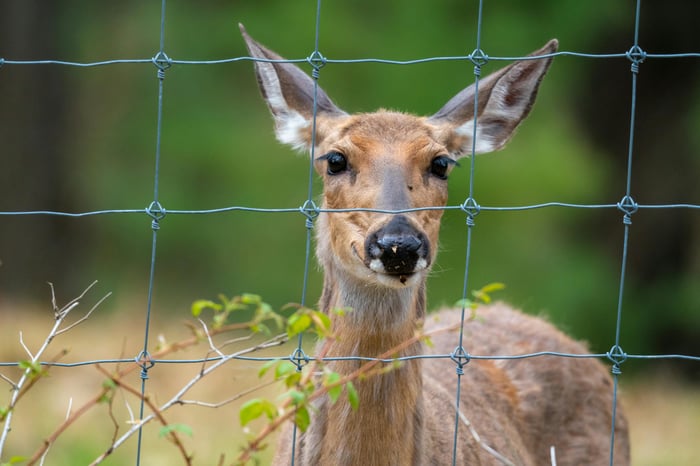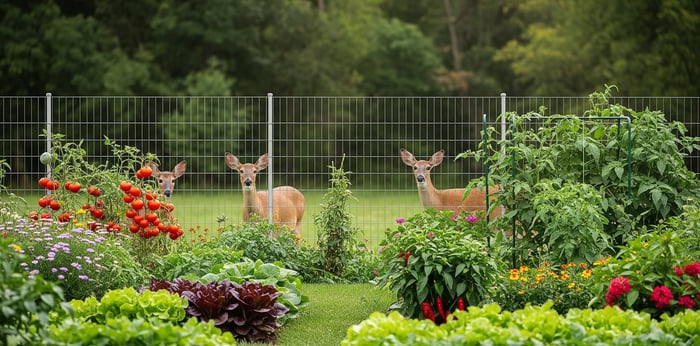
Backyard Dreams & Homesteading Headaches
Table of Contents
Backyard gardening and homesteading have become mental health lifelines for 77% of Americans, but wildlife damage and social media pressure are stalling their progress.
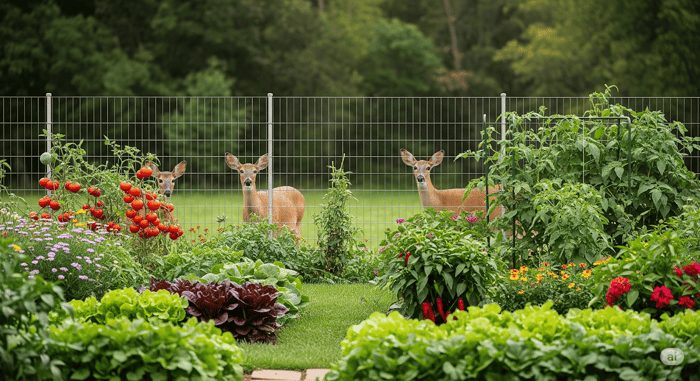
Backyards aren’t just for grilling or tackling weekend projects anymore. For nearly eight in ten Americans, projects like gardening, food growing, and DIY homesteading have become more than hobbies — they’re mental health havens. They reflect a return to slower, more intentional living. As interest in self-sufficiency and homesteading grows, these backyard efforts symbolize a broader lifestyle shift toward wellness, independence, and sustainability.
But turning those backyard dreams into reality? That’s where things get messy. From trial-and-error projects to overnight wildlife raids, setbacks line the path to backyard bliss. To dig deeper, we surveyed 1,000 backyard builders and homesteaders across the U.S. to find out what motivates them, what derails them, and what keeps them going.
Key Takeaways
77% describe their backyard homesteading and gardening projects as sanctuaries that support their mental health.
About two-thirds (69%) say social media makes projects look easier than they are, and 25% were motivated to start by content on TikTok, Instagram, or other platforms.
Nearly 1 in 3 (31%) have experienced wildlife damage, yet half of the respondents garden without adequate protection.
Deer caused the most garden damage (51%), followed by rodents (44%) and rabbits (36%).
63% of those with wildlife damage spent over $100 on repairs or replacements, with 1 in 3 spending over $250—yet just 17% added barriers afterward.
Three in four plan to keep building, with 46% already starting new projects and 26% seeking better protection.
The Great Backyard Sanctuary Movement
Across the country, a quiet revolution is taking place in our backyards. These spaces have evolved into something far more personal—a refuge where nearly 4 in 5 Americans (77%) say they find peace and emotional balance.
But what do these refuges look like? What projects promote the most peace for Americans interested in gardening?
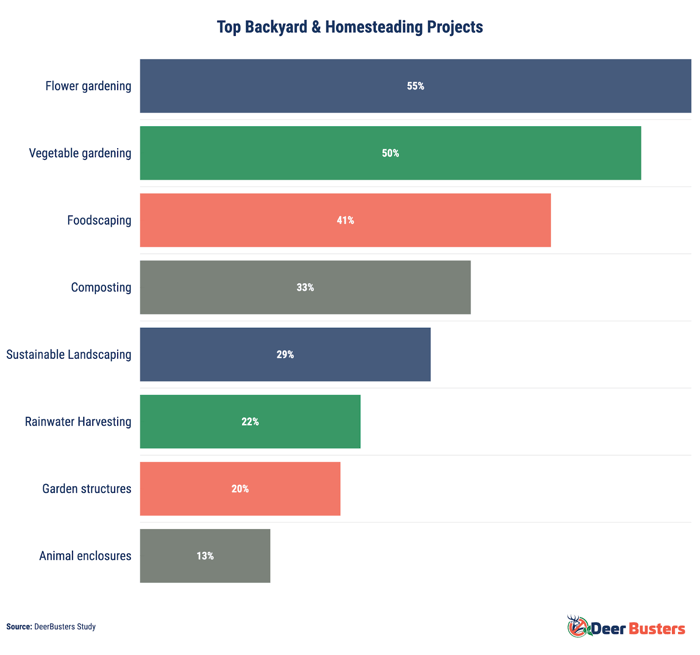
Within our survey, we found that flower gardens top the list of projects (55%), closely followed by vegetable gardens (50%). But people growing these gardens aren’t doing so solely as a hobby. For 45% of respondents, gardening is about finding a peaceful pastime. For 55%, it’s the joy of growing food. Meanwhile, nearly a third hope to become more self-reliant, and 27% are trying to save money. This isn’t just gardening; it’s grassroots wellness and independence.
When Wildlife Wages War on Wellness
Behind every blooming bed of zinnias is a story of grit, disappointment, and resilience. For many backyard dreamers, that story includes waking up to find their hard-earned progress gnawed down by rabbits, picked apart by birds, or completely leveled by deer. Wildlife damage isn’t just a nuisance — it can derail momentum, motivation, and morale.
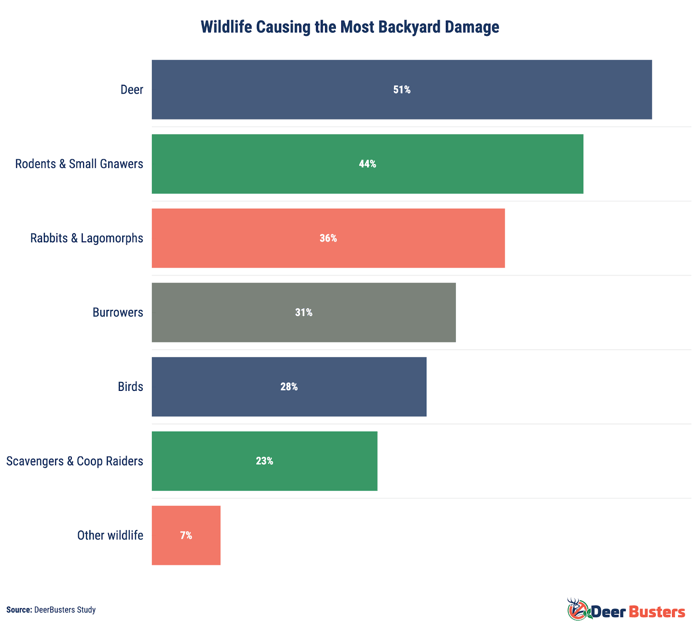
About one in three respondents (31%) said they’ve dealt with wildlife damage in their garden. The most common culprits? Deer led the way at 51%, followed by rodents like squirrels and voles (44%) and hungry rabbits (36%). Birds and burrowers rounded out the top five.
Whether dealing with wildlife or other stressors, many respondents reported feeling emotionally invested in their gardening projects. Nearly 1 in 5 felt so overwhelmed by their project that they cried. For many, the stress went beyond frustration: 24% reported tension with partners, roommates, or neighbors, while others said they relaxed less (17%) or even burned out entirely (9%). When you invest so much of your emotions, energy, and time into a project for a garden, any kind of setback can take a toll on you.
The True Cost of Wildlife Damage—Financial Fallout in America’s Backyards
The price of a backyard dream can be steeper than most expect. For nearly one in three Americans who experienced wildlife damage, the aftermath wasn’t just emotional—it hit their wallets hard. While the vision of a flourishing garden is what draws many to homesteading, the reality is that unprotected projects often lead to costly repairs and replacements that can quickly spiral out of control.
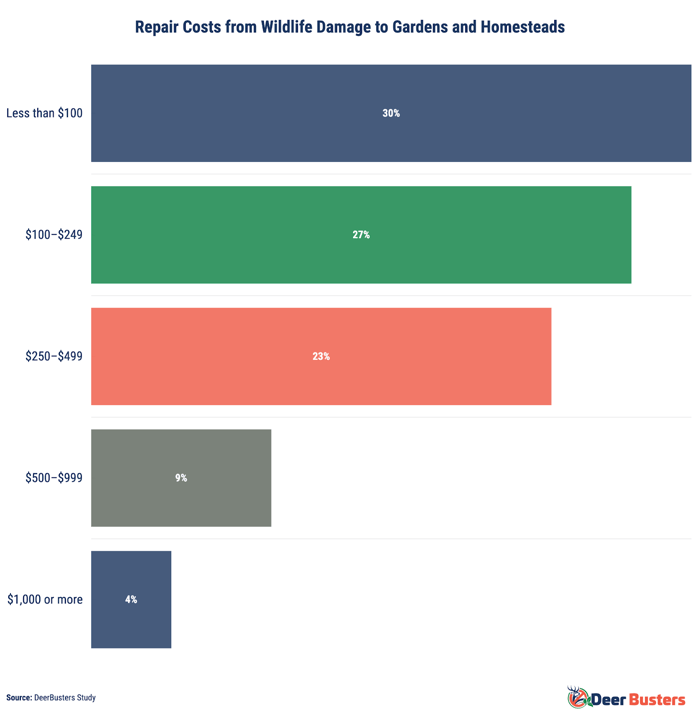 The financial impact adds up fast—nearly two-thirds (63%) of those who suffered wildlife damage spent over $100 on repairs, and 36% spent $250 or more. For some, the bills were even higher: 9% spent between $500 and $999, and 4% faced costs of $1,000 or more. Only 7% did not repair or replace the damage. Alarmingly, 50% didn’t have any protection in place, and only 17% added barriers after the fact, turning what should be a source of pride and wellness into an unexpected expense.
The financial impact adds up fast—nearly two-thirds (63%) of those who suffered wildlife damage spent over $100 on repairs, and 36% spent $250 or more. For some, the bills were even higher: 9% spent between $500 and $999, and 4% faced costs of $1,000 or more. Only 7% did not repair or replace the damage. Alarmingly, 50% didn’t have any protection in place, and only 17% added barriers after the fact, turning what should be a source of pride and wellness into an unexpected expense.
The financial strain doesn’t end with repairs. Over 1 in 8 (14%) backyard builders reported spending more than they could afford on their projects, underscoring how quickly costs can escalate when wildlife strikes.
Social Media Mirage vs. Backyard Reality
Like any other community, the gardening community flourishes on social media like TikTok, Instagram, and Pinterest. On these apps, homesteaders can share advice, post about their achievements, and even share photos and videos of their aesthetically pleasing backyard gardens. What social media doesn’t depict, however, is the reality of gardening. Backyard projects take time, trial, and a lot of patience. This gap between what social media depicts of homesteading life and what actually grows in the soil can leave hobbyists feeling burned out and discouraged.
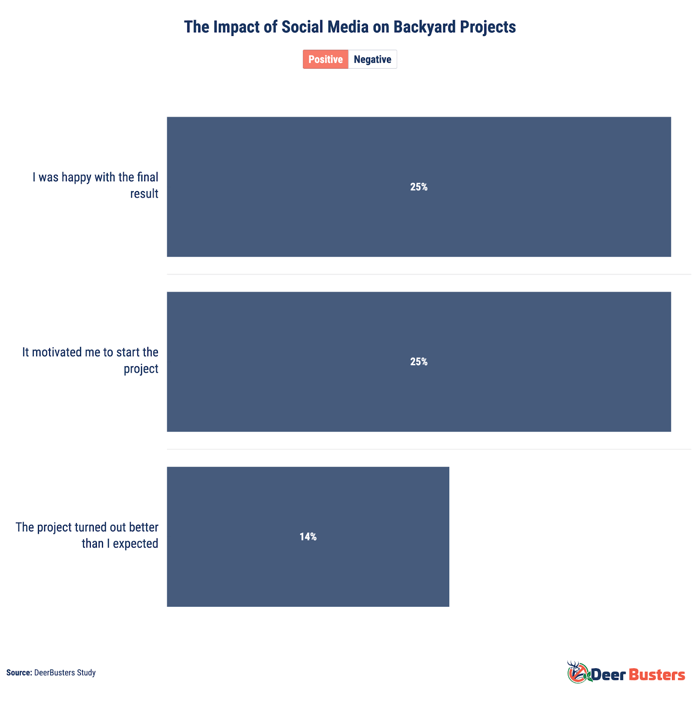
But social media isn’t always a bad thing. In fact, many of our respondents reported social media as a motivation to start projects. However, 69% believe those same platforms drastically oversimplify the effort involved. Among those who followed online advice, 19% underestimated the time commitment, 18% overspent, and 13% had to redo parts of their projects.
Social media surrounding gardening is also a perpetual cycle. Even if respondents reported feeling discouraged because of the disparity between their experience and the expectations that social media created for them, 52% still posted on social media, only sharing the good parts. As a result, they continue to contribute to the same illusion that tripped them up in the first place.
The Resilience Factor: Why Americans Keep Building Despite Setbacks
Despite setbacks — from wildlife damage to burnout — Americans remain committed to their backyard goals. We found that 77% plan to keep going, and many are already starting new projects. It’s not just about growing food or planting flowers — it’s about purpose, joy, and doing better next time. For most, the payoff is worth every challenge. The rewards, both emotional and practical, continue to outweigh the challenges by a wide margin.
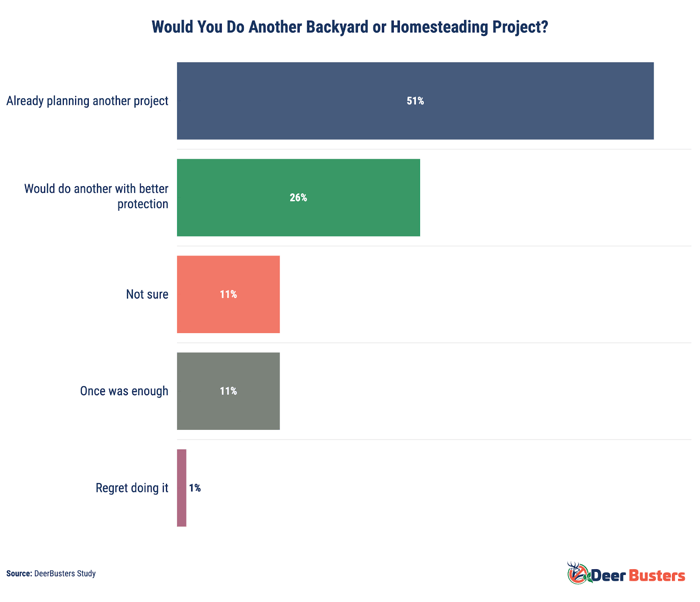 More than a quarter of backyard builders (26%) said they would try again with better protection. That detail alone shows just how much these projects mean—they’re not just creative outlets, and they obviously mean something to the people who dedicate their spare time to gardening. For our respondents, the rewards of gardening ranged from their mental health and pride to family connection. For instance, 63% said their projects brought a sense of joy or accomplishment, 37% learned valuable lessons, and 22% grew closer to loved ones along the way. Only 1% regretted the experience.
More than a quarter of backyard builders (26%) said they would try again with better protection. That detail alone shows just how much these projects mean—they’re not just creative outlets, and they obviously mean something to the people who dedicate their spare time to gardening. For our respondents, the rewards of gardening ranged from their mental health and pride to family connection. For instance, 63% said their projects brought a sense of joy or accomplishment, 37% learned valuable lessons, and 22% grew closer to loved ones along the way. Only 1% regretted the experience.
Protecting What Matters Most
The backyard movement is clearly about more than aesthetics. It’s about wellness, resilience, and the pursuit of self-sufficiency. But when protection is an afterthought, the very spaces meant to nurture peace and progress are left exposed to predictable setbacks. However, homesteaders can easily maximize the benefits of gardening and minimize the drawbacks with protective devices like fencing.
With three in four Americans planning to continue their backyard efforts and nearly a third asking for better barriers, protection has become more than a nice-to-have. It’s essential to sustaining the joy, growth, and mental health benefits these projects bring. From protecting food gardens to preventing burnout, the proper protection helps ensure that backyard dreams aren’t dashed overnight.
Methodology
We surveyed 1,000 U.S. adults who have spent the past year digging into gardening, food growing, homesteading, or hands-on backyard projects. Respondents represented a broad mix of suburban, rural, and semi-rural areas and were selected through a vetted online panel to ensure a nationally representative sample.
About DeerBusters
DeerBusters provides professional-grade wildlife barriers and garden protection solutions to help people safeguard their outdoor investments. Whether you’re growing a food garden or cultivating a sanctuary, the right tools can mean the difference between a season of frustration and a project that thrives.
Fair Use Statement
This content is available for non-commercial use. If you’d like to share it for noncommercial purposes, you’re welcome to do so with proper accreditation and a link back to the original article.

